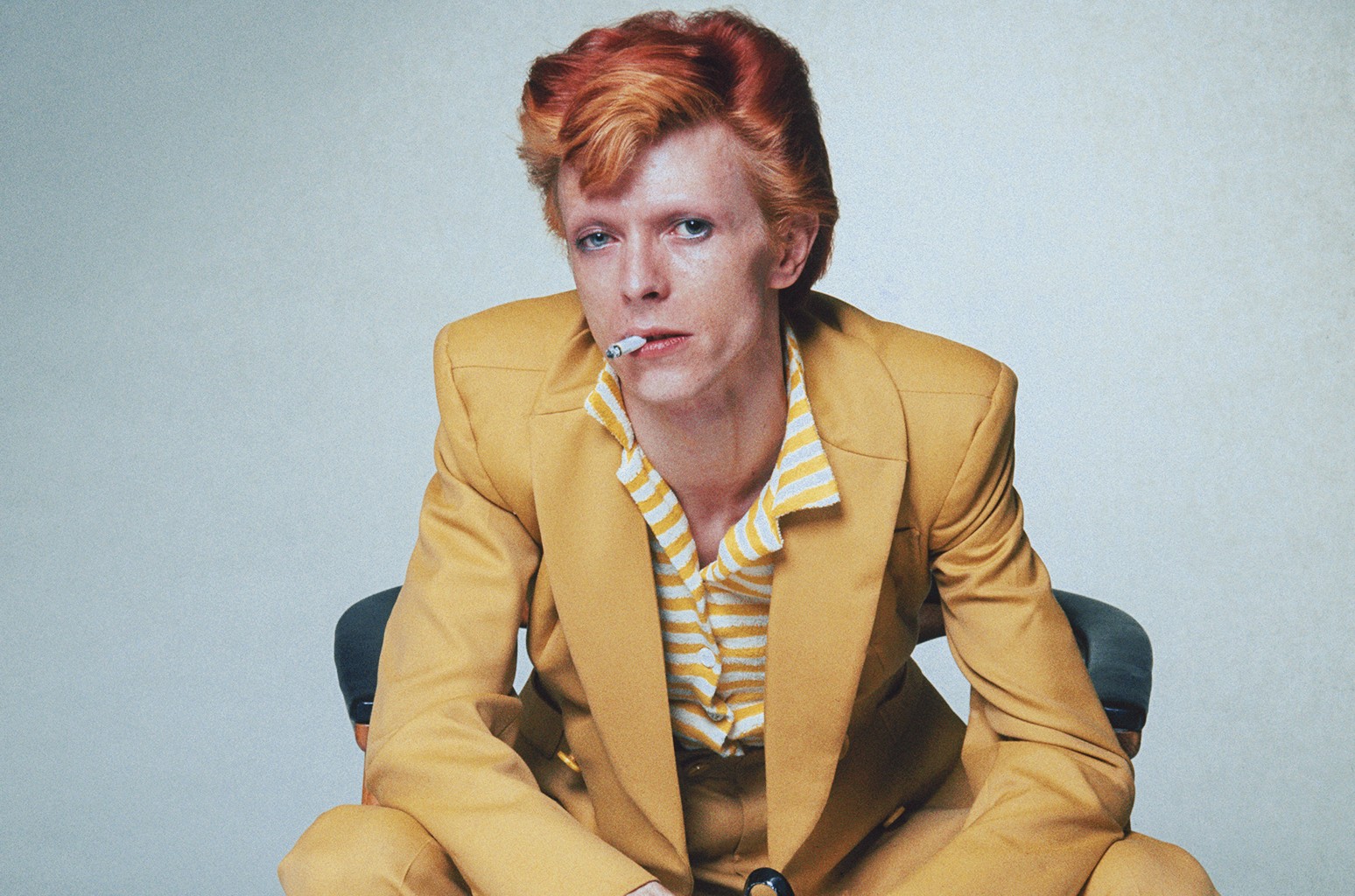David Bowie was a British musician, actor, and record producer. He is widely regarded as one of the most influential musicians in popular music history.
David Bowie was an English musician, actor, and record producer who became one of the most influential musicians of the 20th century.
David Bowie, one of the greatest rock & roll performers of all time, defied simple categorization throughout his career, functioning as both the most arty rocker in the mainstream and the most accessible musician on the fringe. Bowie may have traded in underground notions, but he was never really an outcast when it came to rock & roll. He tried to get into the Top 40 from the beginning of his career in the 1960s, performing British blues, mod rock & roll, and ornate pop until eventually finding success as a hippy singer/songwriter. “Space Oddity” provided Bowie his breakthrough in the United Kingdom, hitting the Top Ten in the summer of 1969 (the summer of Apollo 11), and it did so subsequently in the United States, giving him his first Top 20 success in early 1973. Bowie had swapped his folkie identity for the glam-rock extraterrestrial Ziggy Stardust by that time, one of the numerous sound and image changes that would come to define his career.
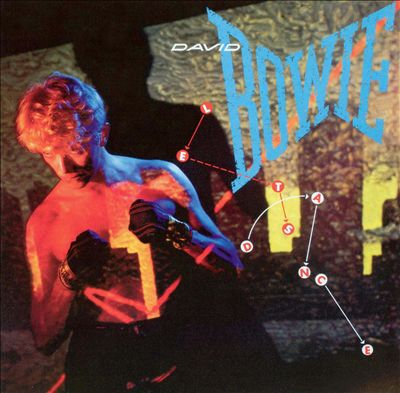
Ziggy Stardust & the Spiders from Mars was a worldwide success in the United Kingdom and a cult phenomenon in the United States, laying the groundwork for a decade in which Bowie experimented with blue-eyed soul, avant-pop, and experimental electronic rock with Brian Eno. He had successes during this time, with “Fame” being his first American number one in 1975, but it wasn’t until Let’s Dance, a sophisticated dance-rock album produced with Nile Rodgers and built with MTV in mind, that he became a celebrity. After achieving stardom, Bowie went through a period of insecurity before reuniting with his hard rock and art origins in the 1990s. He had settled into a comfortable pattern of touring and recording when the twenty-first century dawned, a routine that ended in 2003 when he withdrew from public view. He resurfaced in 2013, starting a last act that concluded with Blackstar, an album released on his birthday, January 8, 2016, after a decade of quiet. Blackstar was created as a goodbye to an audience unaware that he was dying of liver cancer. Bowie died only two days after the album’s release, leaving Blackstar as his last big theatrical effort.
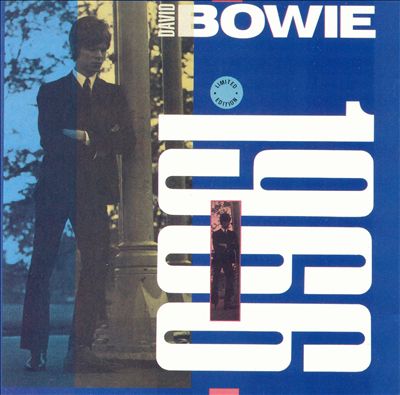 David Jones started playing music when he was 13 years old, studying the saxophone at Bromley Technical High School, when another important incident occurred when his left pupil got permanently dilated in a playground fight. Following his graduation at the age of 16, he worked as a commercial artist while playing saxophone in a variety of mod bands, including the King Bees, the Manish Boys (with Jimmy Page as a studio musician), and Davey Jones & the Lower Third. Despite the fact that all three of those bands produced singles that were mostly disregarded, he continued to play, changing his name to David Bowie in 1966 when Davy Jones of the Monkees became a worldwide sensation. He recorded three mod singles on Pye Records in 1966, all of which were disregarded. He joined with Deram the following year and released the music hall, Anthony Newley-styled David Bowie that same year. He spent many weeks at a Scottish Buddhist monastery after finishing the album. After leaving the convent, he studied mime with Lindsay Kemp’s group before establishing the Feathers, his own mime team, in 1969. The Feathers were short-lived, and in 1969 he founded the Beckenham Arts Lab, an experimental art organization.
David Jones started playing music when he was 13 years old, studying the saxophone at Bromley Technical High School, when another important incident occurred when his left pupil got permanently dilated in a playground fight. Following his graduation at the age of 16, he worked as a commercial artist while playing saxophone in a variety of mod bands, including the King Bees, the Manish Boys (with Jimmy Page as a studio musician), and Davey Jones & the Lower Third. Despite the fact that all three of those bands produced singles that were mostly disregarded, he continued to play, changing his name to David Bowie in 1966 when Davy Jones of the Monkees became a worldwide sensation. He recorded three mod singles on Pye Records in 1966, all of which were disregarded. He joined with Deram the following year and released the music hall, Anthony Newley-styled David Bowie that same year. He spent many weeks at a Scottish Buddhist monastery after finishing the album. After leaving the convent, he studied mime with Lindsay Kemp’s group before establishing the Feathers, his own mime team, in 1969. The Feathers were short-lived, and in 1969 he founded the Beckenham Arts Lab, an experimental art organization.
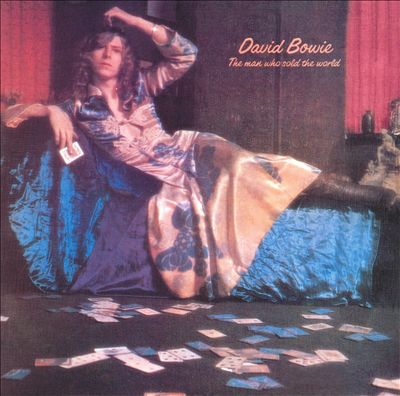 Bowie needed money for the Arts Lab, so he signed with Mercury Records and released Man of Words, Man of Music, a psychedelic singer/songwriter album that included “Space Oddity.” The song was published as a single and went on to become a huge success in the United Kingdom, persuading Bowie to focus on music. After reconnecting with old friend Marc Bolan, he started miming at several of Bolan’s T. Rex shows, ultimately forming Hype alongside Bolan, bassist/producer Tony Visconti, guitarist Mick Ronson, and drummer Cambridge. Despite the fact that the band soon disbanded, Bowie and Ronson stayed close, working on ideas for Bowie’s next album, The Man Who Sold the World, and hiring Michael “Woody” Woodmansey as their drummer. The Man Who Sold the World, produced by Tony Visconti, who also played bass, was a powerful guitar rock album that failed to garner any traction. In late 1971, Bowie released the pop/rock album Hunky Dory, which included Ronson and keyboardist Rick Wakeman.
Bowie needed money for the Arts Lab, so he signed with Mercury Records and released Man of Words, Man of Music, a psychedelic singer/songwriter album that included “Space Oddity.” The song was published as a single and went on to become a huge success in the United Kingdom, persuading Bowie to focus on music. After reconnecting with old friend Marc Bolan, he started miming at several of Bolan’s T. Rex shows, ultimately forming Hype alongside Bolan, bassist/producer Tony Visconti, guitarist Mick Ronson, and drummer Cambridge. Despite the fact that the band soon disbanded, Bowie and Ronson stayed close, working on ideas for Bowie’s next album, The Man Who Sold the World, and hiring Michael “Woody” Woodmansey as their drummer. The Man Who Sold the World, produced by Tony Visconti, who also played bass, was a powerful guitar rock album that failed to garner any traction. In late 1971, Bowie released the pop/rock album Hunky Dory, which included Ronson and keyboardist Rick Wakeman.
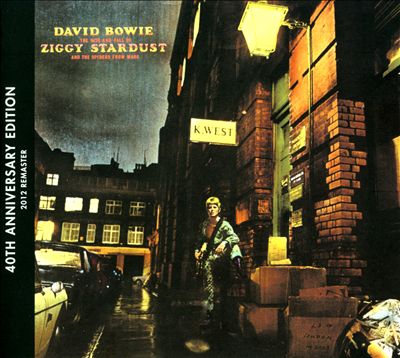 Following the album’s publication, Bowie started to flesh out his most renowned alter ego, Ziggy Stardust, an androgynous, bisexual rock star from another world. Before revealing Ziggy, Bowie said he was homosexual in a January 1972 interview with Melody Maker, which boosted interest in his upcoming album. Bowie colored his hair orange and started wearing women’s clothes, taking inspiration from Bolan’s fashionable glam rock. He went under the name Ziggy Stardust, and his backup band, the Spiders from Mars, consisted of Ronson, Woodmansey, and bassist Trevor Bolder. In late 1972, The Rise and Fall of Ziggy Stardust and the Spiders from Mars was released in England to great acclaim. The record, as well as the extravagant, theatrical performances that accompanied it, were a phenomenon in England, and it helped him establish himself as the only glam rocker to carve out a place in America. The re-released “Space Oddity” — which was now also the title of the re-released Man of Words, Man of Music — entered the American Top 20, and Ziggy Stardust became a word-of-mouth success in the United States. Later in 1973, Bowie swiftly followed Ziggy with Aladdin Sane. He not only released a new album that year, but he also produced Transformer by Lou Reed, Raw Power by the Stooges, and All the Young Dudes by Mott the Hoople, for which he also penned the title tune.
Following the album’s publication, Bowie started to flesh out his most renowned alter ego, Ziggy Stardust, an androgynous, bisexual rock star from another world. Before revealing Ziggy, Bowie said he was homosexual in a January 1972 interview with Melody Maker, which boosted interest in his upcoming album. Bowie colored his hair orange and started wearing women’s clothes, taking inspiration from Bolan’s fashionable glam rock. He went under the name Ziggy Stardust, and his backup band, the Spiders from Mars, consisted of Ronson, Woodmansey, and bassist Trevor Bolder. In late 1972, The Rise and Fall of Ziggy Stardust and the Spiders from Mars was released in England to great acclaim. The record, as well as the extravagant, theatrical performances that accompanied it, were a phenomenon in England, and it helped him establish himself as the only glam rocker to carve out a place in America. The re-released “Space Oddity” — which was now also the title of the re-released Man of Words, Man of Music — entered the American Top 20, and Ziggy Stardust became a word-of-mouth success in the United States. Later in 1973, Bowie swiftly followed Ziggy with Aladdin Sane. He not only released a new album that year, but he also produced Transformer by Lou Reed, Raw Power by the Stooges, and All the Young Dudes by Mott the Hoople, for which he also penned the title tune.
 It’s hardly unexpected that Bowie’s rigorous schedule started to catch up with him in 1972 and 1973, given the quantity of work he crammed into those years. He abruptly announced the band’s dissolution, as well as his retirement from live performances, at the group’s last concert that year, after recording the all-covers Pin-Ups with the Spiders from Mars. He stepped away from the limelight to work on a musical version of George Orwell’s 1984, but when the rights to the book were refused, he turned the project into Diamond Dogs. The album was released in 1974 to mixed reviews, but it produced the smash song “Rebel Rebel,” and he backed it up with an extravagant and costly American tour. Bowie grew obsessed with soul music as the tour proceeded, ultimately revamping the whole performance to represent his new “plastic soul.” Bowie refashioned his band into a Philly soul band and recostumed himself in sophisticated, fashionable clothes after hiring guitarist Carlos Alomar as the band’s leader. Fans were taken aback by the shift, as was the double-album David Live, which included songs from the 1974 tour.
It’s hardly unexpected that Bowie’s rigorous schedule started to catch up with him in 1972 and 1973, given the quantity of work he crammed into those years. He abruptly announced the band’s dissolution, as well as his retirement from live performances, at the group’s last concert that year, after recording the all-covers Pin-Ups with the Spiders from Mars. He stepped away from the limelight to work on a musical version of George Orwell’s 1984, but when the rights to the book were refused, he turned the project into Diamond Dogs. The album was released in 1974 to mixed reviews, but it produced the smash song “Rebel Rebel,” and he backed it up with an extravagant and costly American tour. Bowie grew obsessed with soul music as the tour proceeded, ultimately revamping the whole performance to represent his new “plastic soul.” Bowie refashioned his band into a Philly soul band and recostumed himself in sophisticated, fashionable clothes after hiring guitarist Carlos Alomar as the band’s leader. Fans were taken aback by the shift, as was the double-album David Live, which included songs from the 1974 tour.
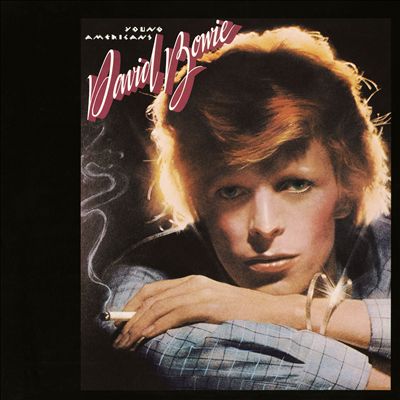 Young Americans, released in 1975, was the climax of Bowie’s soul fixation, and it became his first big crossover success, reaching in the American Top Ten and spawning “Fame,” a song he co-wrote with John Lennon and Alomar, which became his first U.S. number one smash. Bowie moved to Los Angeles, and his first film appearance was in Nicolas Roeg’s The Man Who Fell to Earth (1976). While in Los Angeles, he recorded Station to Station, which not only pushed Young Americans’ synthetic soul into darker, avant-garde areas, but also became a major success, spawning the Top Ten song “Golden Years.” The album established Bowie’s exquisite “Thin White Duke” image, and it mirrored his increasing cocaine-fueled paranoia. Soon after, he felt Los Angeles was too dull and returned to England, where he offered the gathered throng a Nazi salute, signaling his increasing, drug-addled detachment from reality. The event sparked widespread outrage, and Bowie relocated to Berlin, where he resided and collaborated with Brian Eno.
Young Americans, released in 1975, was the climax of Bowie’s soul fixation, and it became his first big crossover success, reaching in the American Top Ten and spawning “Fame,” a song he co-wrote with John Lennon and Alomar, which became his first U.S. number one smash. Bowie moved to Los Angeles, and his first film appearance was in Nicolas Roeg’s The Man Who Fell to Earth (1976). While in Los Angeles, he recorded Station to Station, which not only pushed Young Americans’ synthetic soul into darker, avant-garde areas, but also became a major success, spawning the Top Ten song “Golden Years.” The album established Bowie’s exquisite “Thin White Duke” image, and it mirrored his increasing cocaine-fueled paranoia. Soon after, he felt Los Angeles was too dull and returned to England, where he offered the gathered throng a Nazi salute, signaling his increasing, drug-addled detachment from reality. The event sparked widespread outrage, and Bowie relocated to Berlin, where he resided and collaborated with Brian Eno.
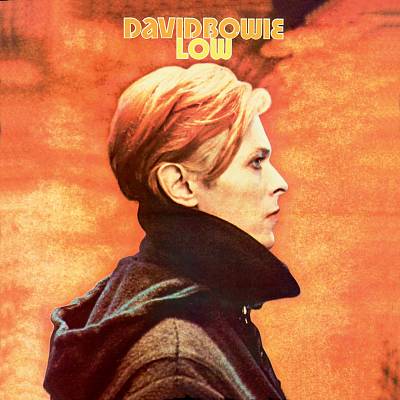 Bowie sobered up after he arrived in Berlin and started painting and studying art. He also acquired an interest in German electronic music, which Eno assisted him in realizing on their debut album, Low. Low was a stunning blend of electronics, pop, and avant-garde approach that was released early in 1977. While it received negative reviews at the time, it became one of the most important albums of the late 1970s, as did its follow-up, Heroes, which was released the following year. In 1977, Bowie not only released two solo albums, but he also produced Iggy Pop’s comeback albums The Idiot and Lust for Life, as well as touring as Pop’s keyboardist. In 1977, he returned to acting, starring with Marlene Dietrich and Kim Novak in Just a Gigolo and narrating Eugene Ormandy’s rendition of Peter and the Wolf. In 1978, Bowie returned to the stage and embarked on a worldwide tour, which was documented on the double-album Stage. Lodger was recorded by Bowie and Eno in New York, Switzerland, and Berlin in 1979, and released at the end of the year. Lodger, like 1980’s Scary Monsters, was backed by many creative videos, and these videos — “DJ,” “Fashion,” and “Ashes to Ashes” — were early MTV favorites.
Bowie sobered up after he arrived in Berlin and started painting and studying art. He also acquired an interest in German electronic music, which Eno assisted him in realizing on their debut album, Low. Low was a stunning blend of electronics, pop, and avant-garde approach that was released early in 1977. While it received negative reviews at the time, it became one of the most important albums of the late 1970s, as did its follow-up, Heroes, which was released the following year. In 1977, Bowie not only released two solo albums, but he also produced Iggy Pop’s comeback albums The Idiot and Lust for Life, as well as touring as Pop’s keyboardist. In 1977, he returned to acting, starring with Marlene Dietrich and Kim Novak in Just a Gigolo and narrating Eugene Ormandy’s rendition of Peter and the Wolf. In 1978, Bowie returned to the stage and embarked on a worldwide tour, which was documented on the double-album Stage. Lodger was recorded by Bowie and Eno in New York, Switzerland, and Berlin in 1979, and released at the end of the year. Lodger, like 1980’s Scary Monsters, was backed by many creative videos, and these videos — “DJ,” “Fashion,” and “Ashes to Ashes” — were early MTV favorites.
Scary Monsters was Bowie’s last RCA album, and it marked the end of his most creative and prolific era. Later same year, he starred in numerous Broadway productions of The Elephant Man, including the lead role. He took a two-year hiatus from music after starring in Christiane F (1981) and The Hunger (1982), finally returning to the studio for “Under Pressure,” a 1981 duet with Queen, and the theme for Paul Schrader’s adaptation of Cat People. Let’s Dance was published in 1983 after he secured a lucrative deal with EMI Records. Bowie had enlisted Chic guitarist Nile Rodgers to produce the album, giving it a slick, groovy basis, and engaged Stevie Ray Vaughan as lead guitarist, despite his lack of experience. Thanks to the stylish, innovative videos for “Let’s Dance” and “China Girl,” both songs became Top Ten hits, Let’s Dance became his most successful album. The album was backed by Bowie’s sold-out arena tour Serious Moonlight.
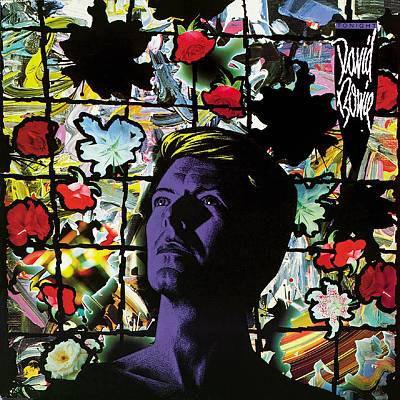 Bowie wasn’t sure how to respond when he was greeted with enormous success for the first time, so he chose to recreate Let’s Dance with 1984’s Tonight. Despite the fact that the album was a financial success, including the Top Ten song “Blue Jean,” it got terrible reviews and was ultimately a commercial failure. He paused in 1985, when he and Mick Jagger recorded a duet of Martha & the Vandellas’ “Dancing in the Street” for Live Aid. He also spent more time jet-setting, attending celebrity events all over the world, and starring in numerous films that were flops, including Into the Night (1985), Absolute Beginners (1986), and Labyrinth (1986). Bowie returned to recording in 1987 with the critically panned Never Let Me Down, which he backed up with the Glass Spider tour, which got mixed reviews as well. In 1989, he collaborated with Rykodisc to remaster his RCA library for CD release, launching the series with the three-disc set Sound + Vision. Bowie promoted the albums with a tour of the same name, stating that after the tour, he would no longer play any of his previous personas. Sound + Vision was a hit, and Ziggy Stardust re-charted as a result of the publicity.
Bowie wasn’t sure how to respond when he was greeted with enormous success for the first time, so he chose to recreate Let’s Dance with 1984’s Tonight. Despite the fact that the album was a financial success, including the Top Ten song “Blue Jean,” it got terrible reviews and was ultimately a commercial failure. He paused in 1985, when he and Mick Jagger recorded a duet of Martha & the Vandellas’ “Dancing in the Street” for Live Aid. He also spent more time jet-setting, attending celebrity events all over the world, and starring in numerous films that were flops, including Into the Night (1985), Absolute Beginners (1986), and Labyrinth (1986). Bowie returned to recording in 1987 with the critically panned Never Let Me Down, which he backed up with the Glass Spider tour, which got mixed reviews as well. In 1989, he collaborated with Rykodisc to remaster his RCA library for CD release, launching the series with the three-disc set Sound + Vision. Bowie promoted the albums with a tour of the same name, stating that after the tour, he would no longer play any of his previous personas. Sound + Vision was a hit, and Ziggy Stardust re-charted as a result of the publicity.
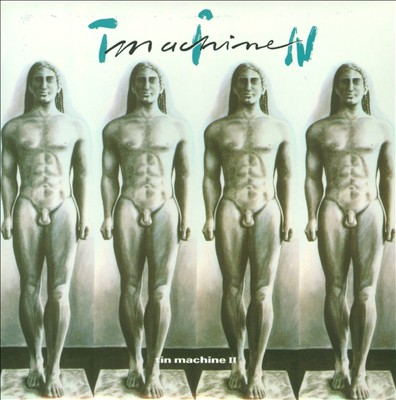 Although Sound + Vision was a triumph, Bowie’s next endeavor was arguably his biggest flop. Picking up on Sonic Youth and the Pixies’ harsh, dissonant rock, Bowie created Tin Machine with guitarist Reeves Gabrels, bassist Hunt Sales, and Hunt’s brother, drummer Tony, who had previously collaborated with Bowie on Iggy Pop’s Lust for Life. Tin Machine released an eponymous album to mixed reviews that summer, and backed it up with a somewhat successful club tour. Tin Machine produced a second album, aptly named Tin Machine II, in 1991, despite the negative reviews, and it was totally disregarded.
Although Sound + Vision was a triumph, Bowie’s next endeavor was arguably his biggest flop. Picking up on Sonic Youth and the Pixies’ harsh, dissonant rock, Bowie created Tin Machine with guitarist Reeves Gabrels, bassist Hunt Sales, and Hunt’s brother, drummer Tony, who had previously collaborated with Bowie on Iggy Pop’s Lust for Life. Tin Machine released an eponymous album to mixed reviews that summer, and backed it up with a somewhat successful club tour. Tin Machine produced a second album, aptly named Tin Machine II, in 1991, despite the negative reviews, and it was totally disregarded.
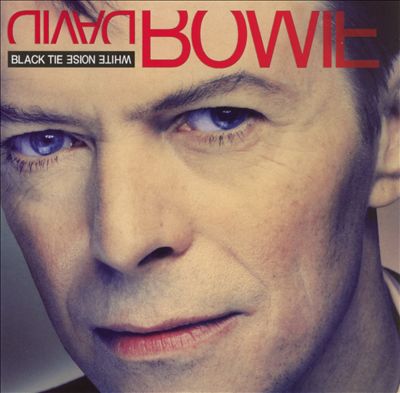 With the refined, soulful Black Tie White Noise, Bowie returned to a solo career in 1993, making the album with Nile Rodgers and his by-then-permanent partner, Reeves Gabrels. The album was published on Savage, an RCA subsidiary, and got good reviews, but soon after its release, his new label went bankrupt, and the record vanished. Black Tie White Noise, as well as the mainly instrumental 1994 soundtrack The Buddha of Suburbia, were the first signs that Bowie was attempting to resurrect his career. He reconnected with Brian Eno in 1995 for the industrial rock-tinged album 1. Get out of the house. Several reviewers praised the album as a comeback, and Bowie backed it up with a co-headlining tour with Nine Inch Nails in the hopes of attracting a younger, alternative crowd, but his gamble backfired: the crowds departed before Bowie’s performance, and 1. Outside vanished. In 1996, he immediately returned to the studio to create Earthling, a techno and drum’n’bass-influenced album. Earthling got largely favorable reviews upon its debut in early 1997, however the album failed to find an audience, and many techno purists chastised Bowie for supposedly abusing their subculture. In 1999, hours… followed. Bowie reunited with producer Toni Visconti in 2002 to record Heathen, which received overwhelmingly favorable reviews. In 2003, he worked with Visconti again on Reality, which was well appreciated.
With the refined, soulful Black Tie White Noise, Bowie returned to a solo career in 1993, making the album with Nile Rodgers and his by-then-permanent partner, Reeves Gabrels. The album was published on Savage, an RCA subsidiary, and got good reviews, but soon after its release, his new label went bankrupt, and the record vanished. Black Tie White Noise, as well as the mainly instrumental 1994 soundtrack The Buddha of Suburbia, were the first signs that Bowie was attempting to resurrect his career. He reconnected with Brian Eno in 1995 for the industrial rock-tinged album 1. Get out of the house. Several reviewers praised the album as a comeback, and Bowie backed it up with a co-headlining tour with Nine Inch Nails in the hopes of attracting a younger, alternative crowd, but his gamble backfired: the crowds departed before Bowie’s performance, and 1. Outside vanished. In 1996, he immediately returned to the studio to create Earthling, a techno and drum’n’bass-influenced album. Earthling got largely favorable reviews upon its debut in early 1997, however the album failed to find an audience, and many techno purists chastised Bowie for supposedly abusing their subculture. In 1999, hours… followed. Bowie reunited with producer Toni Visconti in 2002 to record Heathen, which received overwhelmingly favorable reviews. In 2003, he worked with Visconti again on Reality, which was well appreciated.
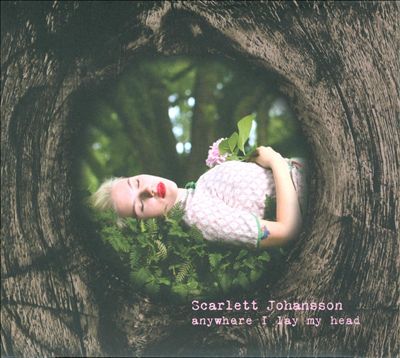 Bowie embarked on a long tour in support of Reality, but it was cut short in the summer of 2004 when he had emergency angioplasty in Hamburg, Germany. Following this health crisis, Bowie took a step back from the spotlight. He performed at the odd charity performance or gala event during the following several years, and he sometimes sang in the studio for other artists (most famously, on Scarlett Johansson’s Tom Waits tribute Anywhere I Lay My Head in 2008). On his 66th birthday, January 8, 2013, he abruptly broke his unofficial retirement, releasing a new song called “Where Are We Now?” and announced the release of a new album. The album, named The Next Day and produced by Visconti once again, was released in March of 2013. The Next Day received generally favorable reviews and debuted at number one or two across the globe, receiving gold certifications in a number of countries.
Bowie embarked on a long tour in support of Reality, but it was cut short in the summer of 2004 when he had emergency angioplasty in Hamburg, Germany. Following this health crisis, Bowie took a step back from the spotlight. He performed at the odd charity performance or gala event during the following several years, and he sometimes sang in the studio for other artists (most famously, on Scarlett Johansson’s Tom Waits tribute Anywhere I Lay My Head in 2008). On his 66th birthday, January 8, 2013, he abruptly broke his unofficial retirement, releasing a new song called “Where Are We Now?” and announced the release of a new album. The album, named The Next Day and produced by Visconti once again, was released in March of 2013. The Next Day received generally favorable reviews and debuted at number one or two across the globe, receiving gold certifications in a number of countries.
 The next year, Bowie released Nothing Has Changed, a new collection that included the new song “Sue (Or in a Season of Crime).” This song became the foundation for David Bowie’s next album, Blackstar. The album, which was released on January 8, 2016, saw Bowie reuniting with Tony Visconti and venturing into new terrain, as shown by the album’s first song, “Blackstar.” David Bowie passed away from liver cancer only two days after the album’s release. Tony Visconti stated in a Facebook post that Bowie had known about his sickness for at least 18 months and produced Blackstar as “his farewell gift.” It reached number one on many national charts, including the Billboard 200, making it his first number one album in the United States.
The next year, Bowie released Nothing Has Changed, a new collection that included the new song “Sue (Or in a Season of Crime).” This song became the foundation for David Bowie’s next album, Blackstar. The album, which was released on January 8, 2016, saw Bowie reuniting with Tony Visconti and venturing into new terrain, as shown by the album’s first song, “Blackstar.” David Bowie passed away from liver cancer only two days after the album’s release. Tony Visconti stated in a Facebook post that Bowie had known about his sickness for at least 18 months and produced Blackstar as “his farewell gift.” It reached number one on many national charts, including the Billboard 200, making it his first number one album in the United States.
 By the fall of 2016, posthumous efforts such as Who Can I Be Now?, a compilation of his mid-’70s recordings that served as a follow-up to the previous year’s box set Five Years, and the release of the cast recording for Lazarus, the Broadway musical he finished in his last years, had begun to emerge. The No Plan EP, which contains Bowie’s renditions of songs heard in the Lazarus musical, was published on January 8, 2017, one year after the release of Blackstar. In September 2017, he released A New Career in a New Town, the third volume in his retrospective box sets, this one focused on his late-’70s recordings. The fourth retrospective box, Loving the Alien, was published the following year, including albums released between 1983 and 1988.
By the fall of 2016, posthumous efforts such as Who Can I Be Now?, a compilation of his mid-’70s recordings that served as a follow-up to the previous year’s box set Five Years, and the release of the cast recording for Lazarus, the Broadway musical he finished in his last years, had begun to emerge. The No Plan EP, which contains Bowie’s renditions of songs heard in the Lazarus musical, was published on January 8, 2017, one year after the release of Blackstar. In September 2017, he released A New Career in a New Town, the third volume in his retrospective box sets, this one focused on his late-’70s recordings. The fourth retrospective box, Loving the Alien, was published the following year, including albums released between 1983 and 1988.
Let’s Dance, Bowie’s best-selling album from the 1980s, was included, as were a number of live recordings, as well as a 2018 remake of his 1987 album Never Let Me Down, which included string arrangements by Nico Muhly and production by Mario McNulty. Throughout 2019, Parlophone published a series of limited-edition vinyl sets featuring demos made by David Bowie in 1969. These tracks were included in the box set Conversation Piece, which also included a new mix of David Bowie’s Space Oddity. Late in 2024, The Metrobolist, a re-released version of The Man Who Sold The World under its original title, was published, followed by The Width of a Circle, a double-disc compilation of non-LP Bowie recordings from 1970, in 2024.
David Bowie was a British musician who became famous for his unique, androgynous style. He is best known for his music, which often incorporated elements of glam rock and art pop. Reference: david bowie genre.
Related Tags
- david bowie birthday
- david bowie nicknames
- david bowie childhood
- when was david bowie born and died
- david bowie net worth

